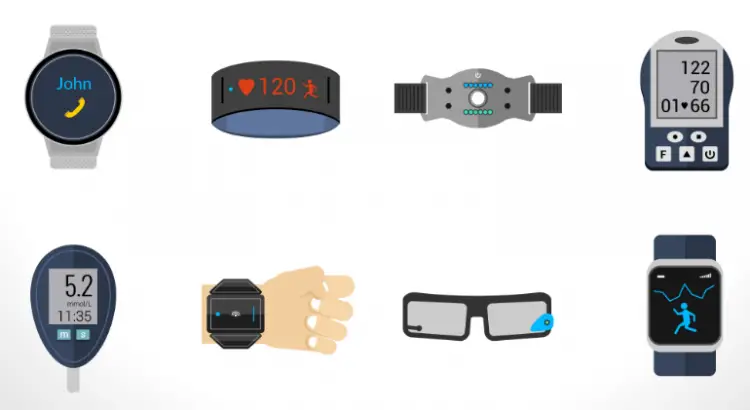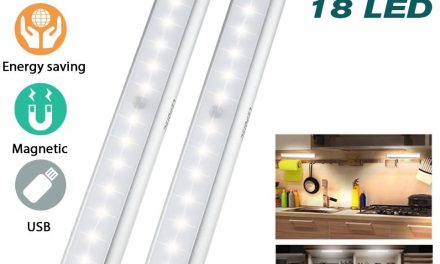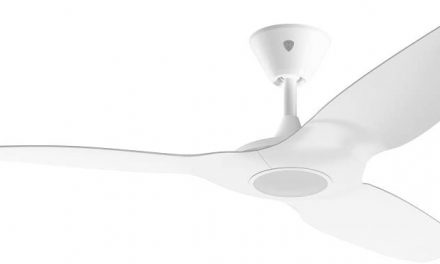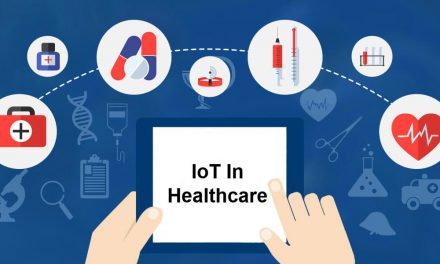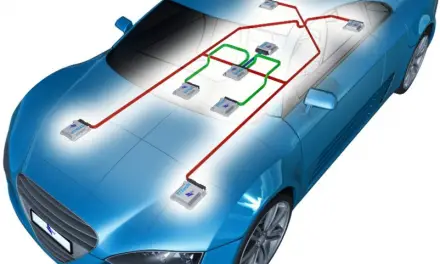Computers have completely changed the world. The introduction of IoT powered computing devices has made the world we live in seem like science fiction movie from the 1960s. This article explores the various IoT wearable devices.
Before we get into IoT devices, let us first define wearable IoT.
Table of Contents
What is Wearable IoT?
Wearable IoT refers to a category of technology devices that are based on the IoT technology and can be worn by a consumer to provide data that can be used to gain meaningful insights into aspects such as an individual’s health and fitness.
These wearable devices must look familiar in look and feel. They are designed to be completely unobtrusive, and sometimes fashionable. An example of this is the iWatch. This is a completely unobtrusive piece of wearable technology that is so nice that people buy it for hundreds of dollars. Advanced trends in technology have allowed such devices to be designed and developed. These trends involve nanotechnology, and the continuous reduction in the size of the microchips that contain the transistors that are the driving force behind the processors.
Now that we understand what wearable IoT is, let us have a look at a few characteristics of wearable IoT.
Characteristics of Wearable IoT
1. Size
The size of the IoT device needs to be quite small. This allows the user to use the device without it looking bulky and out of place.
2. Power
Wearable IoT devices are usually battery powered. This means the processors that are used in such devices are designed and developed to consume as little power as possible.
3. Weight
The wearable IoT devices are usually made to weigh as little as possible. This prevents the user from getting strained muscles and joints. In addition, a lightweight device is not bulky, and will be completely unobtrusive.
4. HMI
The HMI refers to the Human Machine Interface. These devices are designed with a minimal Human Machine Interface. There are usually very limited buttons, and most of the functionality is usually attained through an application on a smartphone device connected to the wearable IoT.
5. Resources
The IoT wearable devices usually have very limited resources. These resources include storage space, RAM and processing power. This is not usually a problem as these devices transmit the data to a more powerful device such as a smartphone to do all the processing and storage.
6. Connectivity
Most, if not all IoT wearable devices can be connected to devices such as smartphones, and others can connect directly to the cloud. This therefore allows the user to gain access to information obtained by the sensor through the cloud and he or she can instantly share the information.
Advantages of IoT Wearable Devices
1. Data Accuracy
The wearable IoT devices have sensors embedded inside them. These sensors provide accurate information that can be used to track the health and fitness of the consumer. In addition, these devices can be used by companies to give to their employees. This is usually done when the employees have high risk roles e.g. miners, fire fighters and chemical processing plant employees. This allows the supervisors in those companies to track the health of their employees in real time, as well as to detect oncoming dangers such as heart attacks or falls.
2. Safety
A typical user, checks their phone hundreds to times in a day. This includes whilst driving or even walking down a busy street. IoT wearable devices such as smart glasses can be used to alert a user when they get a message. Data such as who is contacting the individual and why can be displayed, thus, allowing the user to know such critical information without taking his or her phone out of his or her pocket.
3. Comfort
Wearable technology such as a watch can be used to monitor the body temperature of the user. This will then send the data to a cloud platform, and other devices in the smart home will then react accordingly. If the temperature shows that the individual is cold, the smart home will automatically adjust the temperature.
4. Health
IoT wearable devices are being used to improve the health of its consumers. The devices measure parameters such as the heart rate, the blood oxygen and other important parameters. This data is then sent to the cloud, and it can be used to give early warnings of imminent danger.
Applications of IoT Wearable Devices
1. Jewellery
Jewellery is one interesting application of IoT wearable devices. The Bellabeat Leaf Urban is a pendant made of solid wood composite. This wearable IoT device is an activity tracker, sleep monitor and contains features used to predict the stress levels of the user. It also provides menstrual cycle tracking and allows the user to be prepared for it. It can also be used to help pregnant women to track the days and months of her pregnancy schedule.
2. Fitness Trackers
In this application of IoT wearable devices, the Surge Ultimate smart watch provides a host of features. It offers pure pulse heart rate monitoring, is able to track the footsteps in a day, the number of floors climbed, the calories burned and also helps in sleep monitoring.
3. Smart Bands for Blind People
In this application of IoT wearable devices, the car manufacturing giant Toyota is developing a wearable device aimed at improving the mobility of blind people. This band can be worn nearby the shoulders. The input is generated by cameras which detect the features in the environment. The shoulder device gives feedback to the wearer through vibration and noise. He or she is alerted of what is in front of him and helps the wearer to navigate. It provides facial recognition, object identification and mapping which helps create an even better experience for the blind.
4. Smart Posture Trainers
In this application of IoT wearable devices, the UpRight Go helps to improve the posture of its wearers. This device is placed on the upper back of the wearer and it monitors the posture of the individual. It informs the user whenever he or she deviates from a pre calibrated good posture by producing a gentle vibration reminder.
Conclusion
This article has given an indepth analysis of IoT wearable devices. The characteristics, applications as well as advantages associated with IoT wearable devices were all explored. We hope you enjoyed the article.

